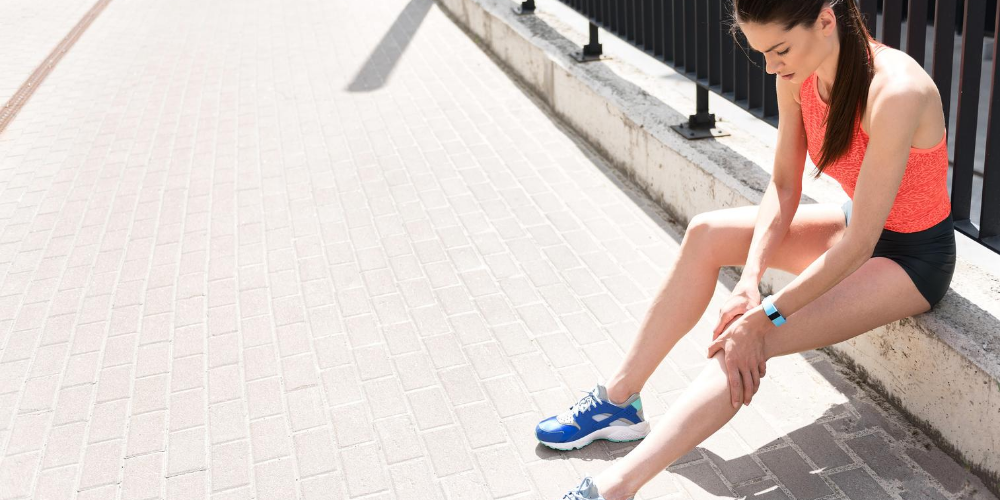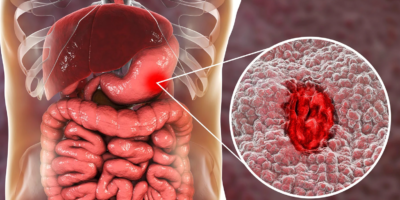Pain is a useful sensory perception. Without it, you might continue walking after a tack punctured your foot. Or, you might arise from a skiing accident and continue downhill with a ruptured ligament. Pain alerts you to injury and forces you to lie low until you recover. Chronic pain is another story. If you have arthritis (joint degeneration), you’re well aware of the problem. Not using the joint can actually further the deterioration. Yet the ache holds you back. A number of maladies can cause discomfort in muscles and joints.


1. Ice It
How it works: The cold reduces inflammation
- PREPARATION:
- Water
- Small paper cups
- DIRECTIONS: Pour water into 6 small paper cups and set them on a shelf in the freezer. Once the water has frozen, remove a cup. Starting at the top of the cup, peel away a strip of paper wide enough to expose the ice. The remaining paper protects your fingers from the cold. Briskly massage the inflamed area with the ice for 3 to 5 minutes. (Do not hold the ice stationary on the same spot; doing so can eventually freeze tissue, damaging it.) If it’s a tendon, passing the ice across the fiber (perpendicular to its length) enhances mobility.
- YIELD: 6 APPLICATIONS
2. Muscle Approach by Poach
How it works: Extra-virgin olive oil and cold-water fish, both part of the Mediterranean diet, contain fats with anti-inflammatory effects. The Mediterranean diet reduces inflammation and may be helpful in people with rheumatoid arthritis. Fish oil supplements also reduce morning stiffness associated with rheumatoid arthritis.
- PREPARATION:
- 32 ounces (946 ml) extra-virgin olive oil, with or without flavoring
- 2 garlic cloves, crushed
- 1 teaspoon (2 g) freshly ground black pepper
- 1 teaspoon (3 g) paprika
- 2 tablespoons (8 g) fresh chopped fresh dill
- 3 bay leaves
- 4 salmon steaks (4 ounces, or 115 g)
- DIRECTIONS:
Preheat the oven to 300°F (150°C, or gas mark 2).
Fill a baking pan halfway with water and place it on the lower rack of the oven (this will keep the fish moist).
Pour the oil into a cast-iron skillet on the stove. Heat the oil over low heat, stirring in the garlic, pepper, paprika, dill, and bay leaves until the oil simmers. Add the salmon and spoon the herbed oil over the steaks, ensuring that they are fully covered by the oil. Allow the oil to return to a simmer. Remove the pan from the stove and place it in the oven on the middle rack, above the pan of water. Bake for about 15 minutes. The salmon is ready when it flakes with a fork. Do not overcook.
- YIELD: 4 SERVINGS
3. Açai Smoothie
How it works: Açai grows in the Amazon. In addition to its nutritional value, the fruit possesses anti-inflammatory and antioxidant properties. A pilot study involving people with pain and limited range of motion (mainly from arthritis) showed that a particular açai juice significantly improved symptoms.
- PREPARATION:
- ¹∕3 cups (80 ml) açai berry juice
- ¹∕3 cups (75 g) plain Greek yogurt
- 1 banana, chopped
- ½ cup (128 g) frozen strawberries
- 1 cup (235 ml) almond milk
- DIRECTIONS: Combine all the ingredients in a blender and blend until smooth. Enjoy.
- YIELD: 1 SERVING
4. Anti-Inflammatory Pineapple-Ginger Salsa
How it works: Pineapple contains an enzyme called bromelain, which, when taken as a supplement, reduces inflammation and pain associated with arthritis and traumatic injury. Some studies combine bromelain with other enzymes or the herb turmeric. Studies have not evaluated the possible benefits of eating pineapple, though it is also rich in antioxidant substances such as vitamin C. Dietary intake of vitamin C appears to protect against the progression of osteoarthritis. Ginger contains anti-inflammatory and analgesic substances. Extracts modestly relieve pain in osteoarthritis.
- PREPARATION:
- 1 cup (165 g) fresh pineapple chunks
- 1 tablespoon (6 g) minced fresh ginger
- 1 teaspoon (5 ml) fresh lemon juice
- DIRECTIONS: In a blender or food processor, blend the pineapple and ginger so that the pineapple still has a chunky appearance. Stir in the lemon juice. Enjoy freshly baked or roasted fish or chicken.
- YIELD: 12 PORTIONS
5. Herbal Pain-Relieving Poultice
How it works: Aloe has anti-inflammatory and pain-relieving properties. It absorbs quickly into the skin, pulling other ingredients along with it. A 2012 study found that topical virgin olive oil was superior to an ointment containing the anti-inflammatory drug piroxicam. People with knee osteoarthritis applied 1 gram of olive oil (or piroxicam) three times a day for four weeks. Turmeric and ginger are traditional Indian analgesic and anti-inflammatory agents. Scientific studies back that up. Although studies investigate internal use, the herbs are traditionally used topically. Cayenne contains capsaicin, which acts as a counterirritant. That means it initially causes a mild burning sensation, then silences local pain nerves. Studies show that topical capsaicin reduces pain from osteoarthritis, rheumatoid arthritis, and back pain.
- PREPARATION:
- 1 tablespoon (15 g) Aloe vera gel
- 1 tablespoon (15 ml) olive oil
- 2 teaspoons (4 g) ground turmeric
- 2 teaspoons (4 g) ground ginger
- 1 teaspoon (2 g) cayenne pepper
- DIRECTIONS: In a small bowl, blend all the ingredients into a paste. Spread the paste over the affected knee, elbow, or other areas. Hold it in place with cheesecloth or plastic wrap. Wash your hands with soap and water. Remove the paste in 30 minutes.
- YIELD: 1 APPLICATION
- NOTE: Turmeric is used to dye fabrics yellow. It will stain clothing and temporarily tinge your skin yellow. The cayenne can burn sensitive areas; avoid touching your eyes after handling cayenne.
6. Cooling Muscle Balm
How it works: Peppermint contains menthol, which, when applied topically, causes a cooling sensation and is thought to inhibit pain receptors.
- PREPARATION:
- 2 tablespoons (30 g) Aloe vera gel
- 8 to 10 drops peppermint essential oil
- DIRECTIONS: Blend the aloe and oil in a small, clean bowl. Massage the mixture into sore muscles. Wash your hands afterward and avoid getting it in your eyes.
- YIELD: 1 APPLICATION
- WARNING: Some people are sensitive to peppermint essential oil. If you develop skin irritation, discontinue use.
- NOTE: Apply to a small area first to adjust the amount of the peppermint to your liking.
7. Bathe Away Muscle Aches
How it works: Epsom salt baths are traditionally used for muscle aches. How they work is unclear. Epsom salts contain magnesium sulfate. Magnesium helps relax muscles. Two Italian studies using a mud-bath treatment high in calcium, sulfate, and magnesium salts produced relief from arthritis. With the exception of ginger and peppermint, science has yet to evaluate the effectiveness of these herbs on musculoskeletal pain. However, herbal baths have a long history of use to relieve aches and pains.
- PREPARATION:
- 2 cups (480 g) Epsom salts
- 10 to 12 drops peppermint essential oil (or ginger, cedarwood, cypress, or rosemary essential oil or a blend of these)
- DIRECTIONS: Blend the salts and the essential oils in a bowl. While a warm bath is running, stir in the mixture. Swish the water with your hand to dissolve it. Step in and soak until your skin puckers. Drink a glass or two of water afterward.
- YIELD: 1 APPLICATION
- NOTE: Alternatively, stand in a hot shower. This is a quick and effective way to relieve muscle aches. Apply the cooling muscle balm afterward.
Fact or Myth?
- RUNNING INCREASES YOUR RISK OF KNEE OSTEOARTHRITIS. The answer is a qualified no. In otherwise healthy people who have good form, moderate running doesn’t seem to raise the risk of knee arthritis. Actually, obesity is much harder on the knees and other joints. However, high-intensity running, particularly when combined with spinning and twisting movements, may lead to arthritis.
Lifestyle Tip
- Try yoga or tai chi. Studies show these ancient practices help relieve symptoms of low back pain, rheumatoid arthritis, and osteoarthritis. (See the index for specific exercises.)
- Catch some rays. Ultraviolet light generates skin production of vitamin D. Higher levels of this vitamin (and greater exposure to sunlight) correlate with a lower risk of rheumatoid arthritis.
- A number of gadgets can reduce the stress on your joints. Rubber grips on gardening tools, pens, and kitchen appliances increase comfort. Try placing a rubber band around twist-off tops for jars, bottles, and tubes (e.g., toothpaste) to make it easier to open them. Long-handled grippers can help you grab objects.
- If you have arthritis, stay active. Inactivity and extreme activity (e.g., repeatedly running marathons) both raise the risk of osteoarthritis. Moderation in all things seems to be the key.
- Stretch three times a week. Slowly move your joints through their complete range of motion. Doing so helps to maintain flexibility and reduces the risk of injury.
- Pop a fish oil capsule. Fish oil supplements also reduce morning stiffness associated with rheumatoid arthritis.
- Listen to your body: If you awaken feeling stiff and sore from a workout, you need to decide whether to take a day off from the gym. If the discomfort is mild and dissipates as you start moving, continue with your usual exercise regime. If your muscles are screaming at you, take a break. Stick with walking and stretching. If the pain is coming from a tendon or ligament, rest is best.
When to call the doctor
- You sustain a moderate or serious injury of any kind.
- An injury results in severe pain, limited movement at a joint, or inability to bear weight.
- You may have hurt your head or neck.
- You suspect you broke a bone.
- A mild strain or sprain has not improved after three days of home care.
- You habitually have muscle tenderness and fatigue.
- A joint or group of joints is increasingly painful.
- Low back pain has limited your ability to function.
- In addition to pain, the area around the joint(s) is reddened, hot, and swollen.
- Overuse has led to pain whenever you repeat a particular motion.






Leave a Reply